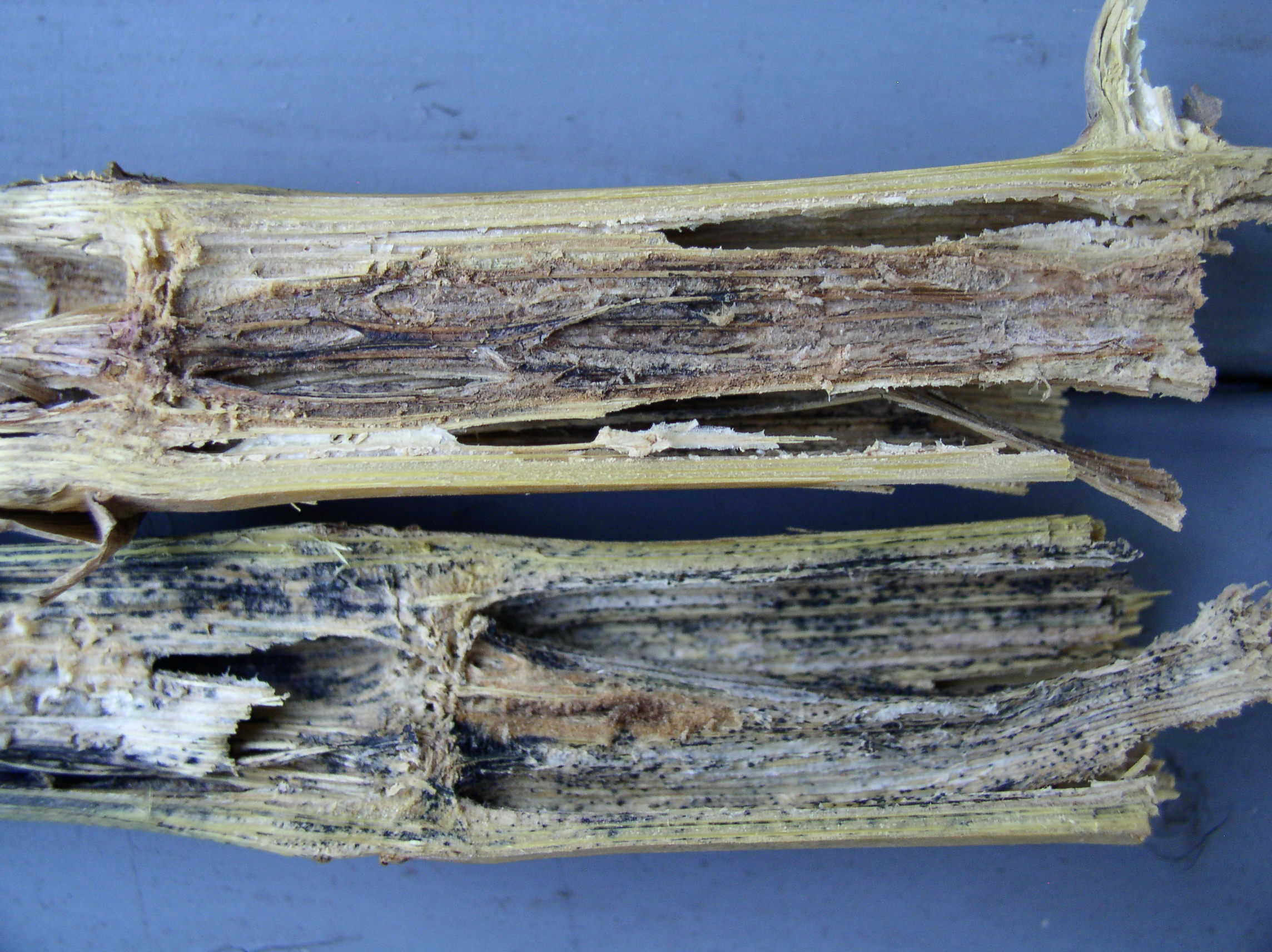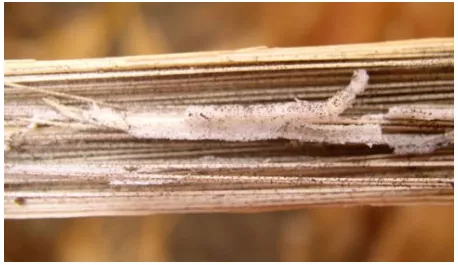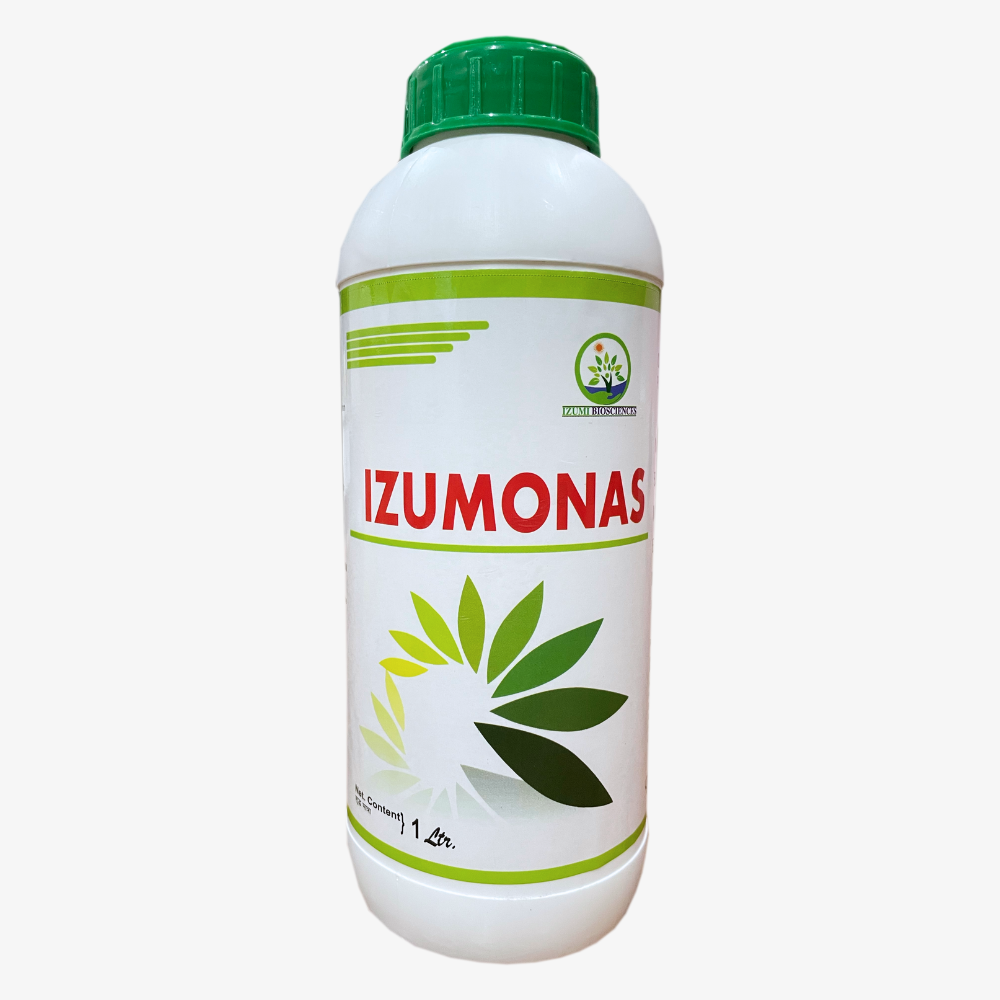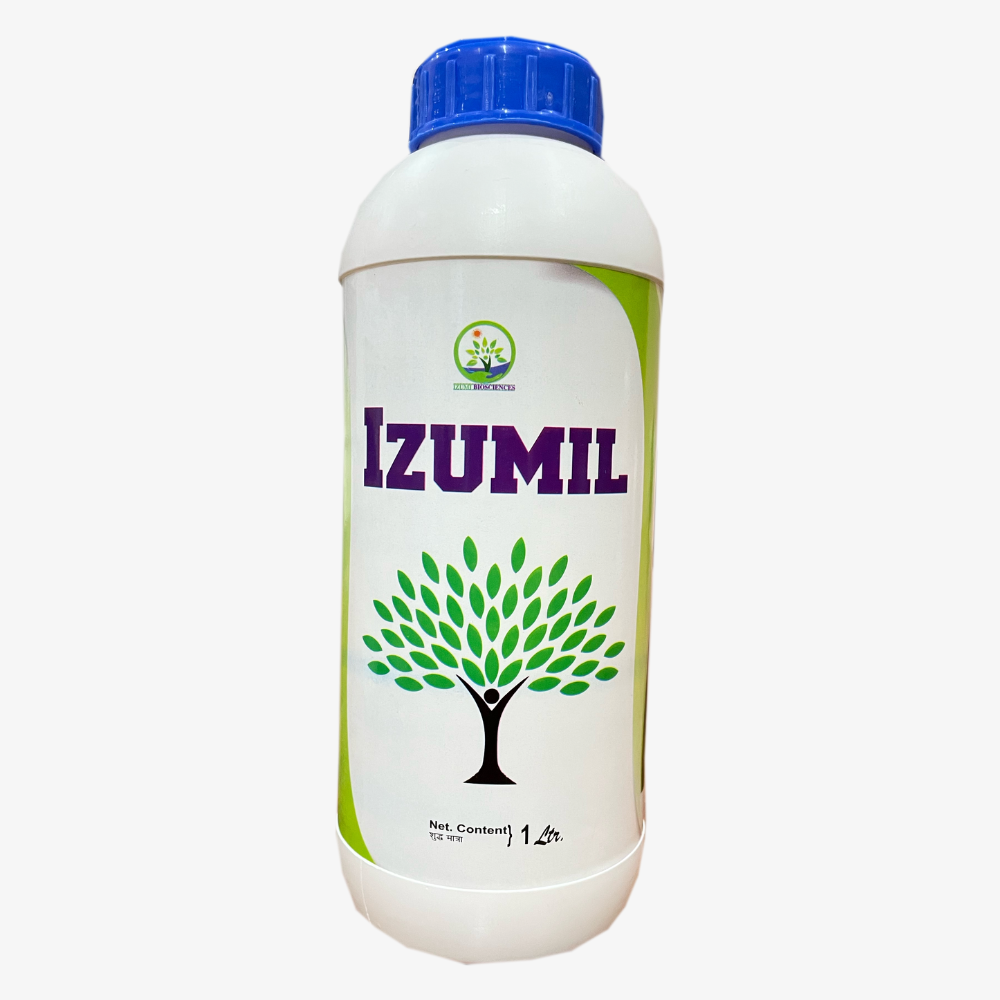
Charcoal Rot of Maize: Symptoms, Disease Cycle and Management
Charcoal rot, also known as dry-weather wilt, is a plant disease that affects crops like soybeans, corn, and sorghum in India. It’s caused by a fungus called Macrophomina phaseolina. This fungus is widespread and can harm many different types of plants.
The fungus makes tiny, tough survival bodies called microsclerotia. These microsclerotia are how the fungus survives in the soil and crop debris during the dry season. They can live for several years in dry soil, but only a few weeks in wet, waterlogged soil.
Soybean plants usually get infected with this fungus early in their growth, right when they’re sprouting and as young seedlings. But here’s the tricky part: the infection doesn’t show any symptoms at first. It stays hidden in the plant until the weather gets tough.
When the weather turns dry and really hot, especially during the flowering to mature pod growth stages of the soybean plant (R1 to R7), that’s when the fungus gets active and starts causing problems.
Charcoal Rot of Maize Symptoms

- Wilting: Affected plants show wilting symptoms.
- Stalk Damage: As plants mature, the fungus spreads into the lower part of the stalk.
- Premature Ripening: This can lead to premature ripening of crops, causing issues like shredding and breaking near the crown region.
- Greyish Streaks: The infected stalks have noticeable greyish streaks.
- Shredded Pith: The inner part of the stalk, known as the pith, becomes shredded.
- Black Minute Sclerotia: Greyish-black tiny sclerotia develop on the vascular bundles.
- Stalk Breakage: Shredding inside the stalk can sometimes cause it to break, especially near the crown region.
- Seedling Damage: Seedling damage can occur if infected seeds are planted, although this has not been observed in Nebraska.
- Midseason Symptoms: Typically, symptoms become apparent after midseason during the reproductive stages of crop development.
- Reduced Leaflet Size: Infected plants produce slightly smaller leaflets than healthy ones.
- Reduced Vigor: Infected plants also exhibit reduced vigor.
- Yellowing and Browning: As the disease advances, leaflets turn yellow, wilt, and eventually turn brown.
- Brown Leaves: The brown leaves stay attached to the petioles (leaf stems).
- Taproot and Stem Discoloration: A light gray or silver discoloration becomes visible in the taproot and lower stem when plants are split open.
- Black Specs (Microsclerotia): Black specs (microsclerotia) can be seen in the stem and taproot tissue.
- Driest Areas First: In the driest parts of the field, symptoms typically appear first.
- Poor Pod Fill: Upper pods may have poor fill, and overall plant vigor decreases.
- Flat Pods: In some cases, the upper part of the plant may have flat pods without seeds.
- Corn Infection: In corn, charcoal rot becomes noticeable when the plant is in the tassel stage or later.
- Shredded Stalks: Infected corn stalks become shredded, with the pith completely rotted.
- Stringy Vascular Strands: Stringy vascular strands may remain intact.
- Black Sclerotia: Small black spherical sclerotia of the fungus can be found on and in the vascular strands, giving the internal stalk tissue a gray color.
- Weakened Stalks: As plants mature, the fungus weakens the stalks, potentially causing them to break.
Also Read: Turcicum Leaf Blight of Maize: Symptoms, Disease Cycle, and Management
Disease Cycle and Favorable Conditions of Charcoal Rot

Favorable Conditions:
- High Temperature and Low Soil Moisture (Drought)
- Soil Temperature 30 – 42°C
- Low Soil Moisture
- Low Soil pH (5.4 – 6.0)
Disease Cycle:
- Wide Host Range: The fungus responsible for charcoal rot can attack a variety of plants, including sorghum, pearlmillet, fingermillet, and pulses.
- Survival in Infected Plant Debris: The fungus can survive for more than 16 years in plant debris that is already infected.
- Primary Source of Infection: The primary way the disease spreads is through soil-borne sclerotia, which are hard survival bodies produced by the fungus.
- Attack on Various Hosts: The pathogen can also infect many other hosts, which helps it survive and spread.
- Facultative Parasite: This fungus can live as a parasite, causing disease in living plants, but it can also survive on dead organic tissues, particularly from its natural hosts, by producing sclerotial bodies.
Also Read: Downy Mildew of Maize: Symptoms, Life Cycle, Management
Charcoal Rot of Maize Management
Preventing Method:
Izumonas-Best Fungicide

Izumonas (Bio Fungicides and Bactericides)
Contents: Pseudomonas Fluorescens
IZUMONAS is a biological product consisting of plant growth-promoting rhizobacteria (PGPR), which are naturally occurring bacteria found widely in nature. This unique product is designed to enhance plant defence mechanisms and promote healthy growth. IZUMONAS can be used on all types of crops without leaving any residue on the plants.
Izumil-Best Fungicide

Izumil (Bio Fungicides and Bactericides)
Contents:
- Extract of Streptomyces griseus: 30%
- Extract of Streptomyces violaceus: 40%
- Dissolving agents: 30%
IZUMIL is a remarkable biotech research product that has been developed to activate the natural defence mechanism of plants. By using IZUMIL, plants can better protect themselves against fungal pathogens, improve their physiological functions, and develop resistance against various harmful microorganisms. Similar to IZUMONAS, IZUMIL can be safely used on all crops without leaving any residue.
Modes of Use:
- Seed Treatment: Mix 5-10 ml of IZUMONAS and IZUMIL per kilogram of seeds in an adequate amount of water. Submerge the seeds in this solution and allow them to dry in a shaded area before sowing.
- Seedling Treatment: Combine 100 ml of IZUMONAS and IZUMIL per 20 litres of water. Dip the roots of the seedlings in this solution for approximately 30 minutes prior to transplanting.
- Soil Application: Mix 500 ml of IZUMONAS and IZUMIL with 30 kilograms of farmyard manure (FYM) or soil. Apply this mixture to one acre of land before ploughing or irrigation.
- Foliar Application: Dilute 2-3 ml of IZUMONAS and IZUMIL each in 1 litre of water. Use this solution to spray the entire foliage of the plants, ensuring complete coverage on both sides of the leaves. It is advisable to shake the bottle before use. For best results, spray early in the morning or evening. If a power sprayer is used, double the recommended dosage.
Cultural Method:
Charcoal rot is a problem for plants that face tough conditions like high temperatures, drought, or soil that’s not so great (either too good or not good enough). But don’t worry, there are some simple things you can do to help your plants stay healthy:
1. Reduce Plant Stress
- Plants under stress are more likely to get charcoal rot.
- Try to keep your plants happy and comfortable.
2. Control Plant Numbers
- If you have too many plants in one area, they might stress each other out.
- So, think about spacing them out.
3. Fertilize Wisely
- Pay attention to the kind of food your plants need.
- Phosphorus is important, so make sure they get enough of it.
- Good fertilizer won’t stop charcoal rot, but it can make the disease less harmful to your plants.
4. Rotate Crops
- If your field has had charcoal rot before, give soybeans a break.
- Plant something else, like small grains or corn, for at least two years.
- Corn can get charcoal rot too, but it usually has fewer of those bad microsclerotia things in the soil than soybeans.
- Microsclerotia can stick around in soil forever, so it’s good to mix things up.
Also Read: Sheath Rot Disease of Rice: Symptoms, Disease Cycle, Management
